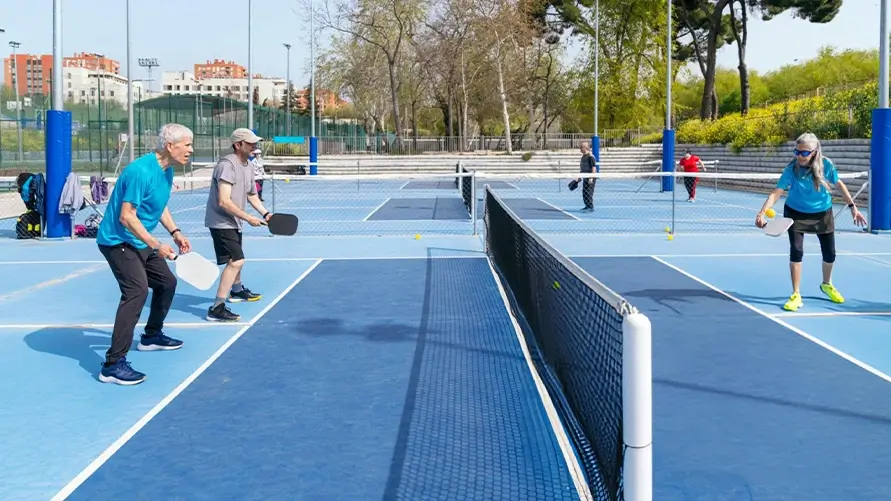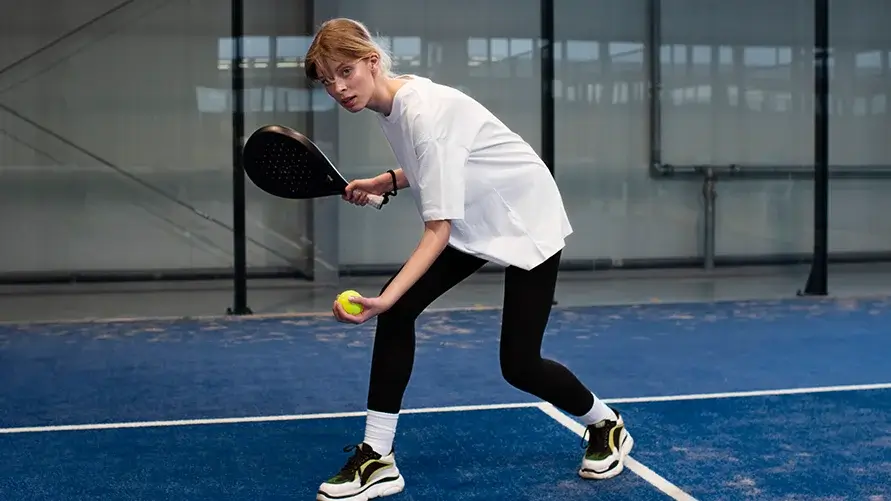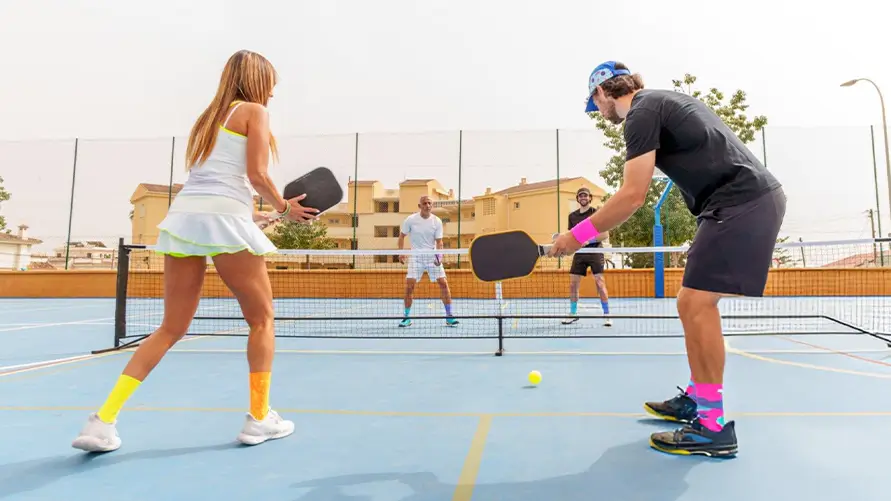Pickleball is no longer a sports trend; it’s booming. Alone in 2023, over 36 million Americans played the game, making it a fast-growing sport. New courts are showing up in gyms, public parks, retirement communities, and even inside converted warehouses.
But just because pickleball is trending doesn’t mean your business will grow automatically. New clubs, coaches, and facilities are opening all the time. Everyone is trying to attract players, run events, and build a community.
And if you’re still relying on old-school marketing, like a basic Facebook page, a few flyers, or the occasional email, you are falling behind. And it’s because competitors out there are more creative and strategic with their marketing.
And here, marketing for the pickleball business doesn’t mean running more ads or yelling louder. Rather, it is about building a strong marketing system that positions your facility as the go-to hub for pickleball in your area. This playbook will help you build a stronger marketing strategy.

Know your market: The first step most owners skip
A common mistake in marketing for the pickleball business is lumping everyone together as “players.”. In reality, your market is made up of distinct groups, each with its own motivation, preferred communication styles, and spending habits.
Understanding these segments changes how you promote, price, and even schedule your offerings. Here are the five main audiences most pickleball businesses serve:
- Beginners – They’re curious but often intimidated. Many fear they’ll slow others down or look silly. They need beginner-friendly clinics, patient coaches, and a clear on-ramp.
- Competitive players – They live for tournaments, rankings, and improving their game. They respond to performance-based programs, leaderboards, and advanced training sessions.
- Families – Parents see pickleball as a rare sport that multiple generations can enjoy together. They love family events, package pricing, and flexible weekend play.
- Seniors – For older players, pickleball is a social, low-impact exercise. They value community, weekday leagues, and personal invitations over digital ads.
- Corporate groups – HR departments use pickleball for wellness and team building. They’re interested in private bookings, catering options, and convenient scheduling.
When you tailor your events, promotions, and messaging to each segment, your conversion rate skyrockets. For example, a print flyer in the senior center announcing a “Senior Social Pickleball Morning” will fill up faster than a generic “Court Rentals Available” post online.
The 6-week marketing blueprint that actually works
Marketing works best when it’s paced. Trying to promote an event a week before it happens is like planting seeds and expecting full-grown trees by the weekend. A well-timed plan builds momentum and ensures each touchpoint has time to work.
Here’s how to roll out a six-week campaign for tournaments, open houses, or seasonal programs:
Week 1 – Define and plan
This is your foundation week. Clarify exactly what you want from this campaign: more memberships, higher lesson bookings, or increased off-peak court use. Confirm the event date, structure, entry fees, and partners or sponsors. Assign responsibilities so no one’s guessing who’s handling graphics, who’s posting on social, and who’s liaising with vendors.
Week 2 – Create your assets
You can’t promote without something to show. Develop branded graphics for social media, banners for email, and printable flyers. Set up your booking page with a clear call-to-action. Record a short teaser video; authentic phone footage of happy players is often more engaging than a polished ad.
Week 3 – Early promotion
Start talking to your existing audience. Send your first email blast with early-bird pricing or bonuses. Post on social media using friendly, personal captions, not just “flyer dumps”. Have staff mention the event in every interaction; they’re your most trusted sales channel.
Week 4 – Community outreach
Expand beyond your base. Partner with local businesses, a coffee shop offering a free drink coupon to event attendees, or a gym cross-promoting to their members. Post in local online communities like Facebook neighborhood groups and NextDoor. Add a charity component to widen appeal.
Week 5 – Final push
Now’s the time for urgency. Share behind-the-scenes glimpses: courts being prepared, trophies arriving. Spotlight giveaways, celebrity guests, or special match-ups. Consider a small paid ad targeting your zip code and surrounding neighborhoods to catch last-minute sign-ups.
Week 6 – Event + follow-up
Execute the events with energy. Capture quality photos and video of games, smiles, and crowds. Tag participants in social media posts, and they’ll share them with their networks. Within 48 hours, email attendees thanking them and offering a limited-time discount or an invitation for their next booking.

Creative tactics your competitors aren’t using
If your competitors are just doing Facebook posts and generic flyers, this is where you can leap ahead with creative marketing for pickleball business:
Micro-influencers as ambassadors
Local micro-influencers (1,000-10,000 engaged followers) have more trust with their community than big-name athletes. Find active retirees, local wellness bloggers or high school athletes with engaged networks. Offer them free play, gear, or event passes in exchange for regular posts and invites.
Wellness + pickleball events
Combine pickleball with complementary activities, yoga, nutrition workshops, or meditation. A “stretch & serve’ morning that starts with 30 minutes of yoga and ends with friendly doubles can bring in people who might otherwise overlook your club
Pop-up courts
Take pickleball to people. Partner with your city to set up temporary courts at festivals, farmers’ markets, or public parks. Offer 5-minute “try it now” sessions and hand out cards with a first-visit free code.
Hybrid clinics
Stream your beginner or advanced training sessions online for remote audiences. Later, repurpose the recording into a downloadable “Beginner’s starter pack” as a lead magnet on your website.
Local boosters: Your community is your amplifier
The most effective marketing for a pickleball business is hyper-local. You don’t need a national campaign; you need to be everywhere in your zip code.
Work with breweries for “Pints & Pickleball” nights that blend recreation with socializing. Offer weekday leagues at times that suit retirees and stay-at-home parents. Collaborate with schools to bring pickleball into PE classes, and parents will hear about it and book family sessions.
Fundraising tournaments for local causes not only bring in fresh faces but also create positive press coverage. People are more likely to attend when it supports something meaningful.
Your content and SEO strategy
Your digital presence should work while you sleep. When someone searches “pickleball near me” or “best pickleball lessons in [your city]”, your name should be the first they see. But doing this needs a strategic approach, and here’s how to make that happen:
- Optimize your Google Business Profile with high-quality photos, updated hours, and weekly posts.
- Create targeted blog content, like “Best pickleball Drills for Beginners” or “Top 5 pickleball mistakes (and how to fix them).”
- Use internal linking to send readers from informational posts directly to your booking or membership page.
- Sprinkle in local keywords naturally so each engine knows where you operate.
Pair your written content with short, authentic video clips, game highlights, member shoutouts, and quick tips to post on Instagram Reels, TikTok, and YouTube Shorts.
Visuals that stop the scroll
Visuals sell the experience. Your goal is to make someone say, “That looks fun, I want to be there.” Three visual types you should prioritize:
- Action shots: Players mid-serve or celebrating a point. These convey energy and excitement.
- Crowd moments: Smiling groups between matches, creating the sense of community newcomers crave.
- Behind-the-scenes: Staff setting up, prepping gear, or chatting with players, making your facility feel approachable.
Add a small watermark of your logo to every image so shared posts keep your brand visible.
Measuring what matters
A good campaign doesn’t end when the event does; it ends when you’ve learned from it. Track these monthly:
- Court utilization rate: Are you maximizing available hours?
- Lesson bookings: Which marketing channels bring the most new students?
- Event attendance vs. spend: Was the ROI worth it?
- Retention rate: How many first-timers become repeat players?
If one channel drives traffic but not return visits, you know where to refine.
Final takeaway
Effective marketing for a pickleball business isn’t about doing everything; it’s about doing the right things, in the right order, with consistency. Start by understanding your audience segments, then run one six-week campaign following the steps here. Add two or three creative tactics to stand out, track your results, and refine.
Your local pickleball community is growing fast. The question is: will they be playing at your courts or someone else’s? With the right marketing system, you can make sure it’s the former: your court.




